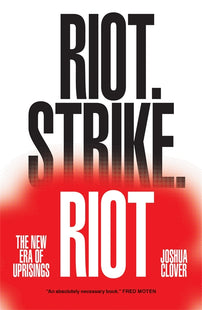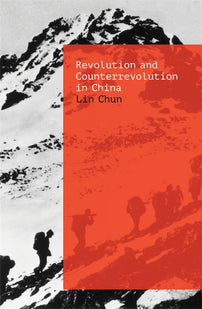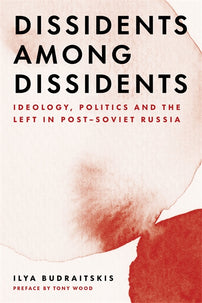Static and Signal: Part Two
In the second part of their series on the global conjuncture, Nikhil Pal Singh and Joshua Clover survey our present economic and ecological impasse, and search through the ruins for the green shoots of solidarity and for the "openings that are necessarily present when things fall apart."

We had the poor etiquette in Part One of invoking the dialectic. But let us make the best of it. We suggested the inadequacy of that received version which seems to promise, or at least offer, the logic of supersession wherein an age passes away when its contradictory structure is broken apart and reformed at a higher level. The leading referent for “higher level” in Marx is the matter of productivity, the increasing capacity to crank out use values. If that is the concrete referent, the presupposition for this idea of progress is growth more broadly.
But finally the materialist dialectic, designed to understand how the antagonistic elements of social relations give tendential shape to historical unfolding, promises an is rather than an ought, a way of accounting for how we arrived at this turn (that is to say, exactly what the concept of “neoliberalism” declines to provide). It offers a true account not of some inevitable future growth but of how we reached a circumstance where growth, the absolute sine qua non of capitalism, is for better or worse no longer in reach, and how if it were, this would simply accelerate the poisoning of the planet.
“We are all Keynesians now,” some president or another said in the rosy dawn of the reputedly anti-Keynesian era. This truth would eventually encompass no few thinkers who identify with Marx and his methods. Even on the radical left it is the Keynesian imaginary that underwrites the fantasy of growth, now explicit, now implicit, cached in everything that gets called a “new deal,” embedded in that imaginary solution to real contradictions that is “green jobs,” providing the framework for new and old ideas that state spending can run through all constraints to subsidize the things in which capital will not invest: “clean technology” development, employment expansion, and so on. The virtuous cycle will somehow be restored, or even more astonishing to tell, the state will simply drive capital’s virtue ad infinitum, funding a green transition toward which capital is openly hostile and/or structurally indifferent.
Lovely to think so, though given the accrued evidence it is hard to imagine that, even if such things were possible, the state would be so inclined by anything less than revolutionary seizure. Indeed, this is an emergent ideologeme of the present, beginning to appear in book after book from political jeremiad to popular science fiction: revolutionary violence in the service of policy reform. This registers a real desire and a real impasse. But if state seizure is the plan, we should perhaps ask for something more than sustained deficit spending.
Let us however step back from such imaginings, at least for the moment. These then are the blockages: We are not going to outgrow the end of the world. Neither is there a path to the same ends promised by growth but somehow decoupled from its needs and consequences. This is simply the same fantasy resolution gone structural: more jobs, more productive capacity, more redistributive je ne sais quoi, all of this happening everywhere, despite a zero-sum economy. And even if such a thing were possible: glub glub.
So — must we be nihilists?
Worse things have happened. But it is also worth noting that imagining the end of the world does in fact force us to imagine the end of capitalism. To call back to Part One: the calamitous descent of the pandemic, and the registration of the Trump Era as expression of a collapse far longer in the making, throw this ending into a kind of relief that is inevitably terrifying but contains concrete intimations of utopian possibilities. Or perhaps merely intimations that we can hold open the possibility of collective flourishing. That may be as utopian as things get. Here are just a handful of endings that hover into view that bear reflection, and do so beyond the aegis of policy reforms.
***
[book-strip index="1" style="display"]How do we move both with and away from declinism? How do we wrest the grammars of transformation and emancipation from the presuppositions of endless growth, or its corollary, cleansing rounds of creative destruction? We might suggest several elements that could compose a realistic anticapitalism for the left — realistic in the sense that each became sharply illuminated, if only momentarily, within the bleak folds of the first year of the pandemic.
We referred in Part One to the sweep of emergency spending that waived austerity doxa with income support and debt moratoriums. For an occasion so rare as to feel epiphanic, our society was given a glimpse of the decoupling of wage-work from subsistence. Undoubtedly, this was short-lived and unevenly distributed. And we want to be as clear as possible at this moment: we do not mean, “the pandemic response showed that the state has the capacity to address social needs (or climate crisis or etc.) if it wants to.” Indeed, rarely have we seen a clearer case of the state’s thralldom to the interests of capital — the exact opposite of evidence that communal luxury is inhibited only by a failure of political will.
But the short-lived reorganization of money-mediated social reproduction in its basic operations reflected an opening nonetheless, neither a demand for full employment nor basic income, but rather an end to the commodification of labor. The so-called “Great Resignation” that followed was nothing if not its agentive corollary, a reclamation against wage-work of time for various kinds of activity, the dissolution of boundaries separating unwaged work, the seeking out of new cooperative ventures and passions, less commuting, time for teaching children, the flourishing of new modes of mutual aid, caring for neighbors and kin. At a minimum it illuminated the truth of social structure so ceaselessly dissembled: compulsory work is what kills you, and you do it only because it’s compulsory. This realization does not undo the compulsion on its own, naturally. It does offer this compulsion as the real terrain of struggle, rather than the nimbus of nominal rights ceaselessly offered as being where the fight is, and this might redirect our sense of the struggle at hand.
If “essential work” is re-signified as compulsory work, the windfalls of time and money that accrued to those that sit atop the “work from home” pyramid demonstrates the necessity of stripping the insulation from the knowledge economy. Instead of buying time and imagining redistributive solutions to the decline of mass production, we can now understand with much greater depth and facility how we are knitted together collectively in virtual space, the creative, collaborative and learning potential this enables, and how these are captured, mined, and surveilled toward arrogating some portion of circulating profits while imposing the ever-greater social control needed in the long twilight of wage discipline. We are the furthest thing from techno-optimists. We have no doubt that some technologies are form-determined by the need for wealth production. We can nonetheless ask the question of whether some of the technical advances of recent history — here we might think of vaccines, or for that matter virtual gatherings — might be prised loose from hoarding, rent-seeking, all the uses that have given them their social content via free transfer, decentralized adaptation and use, and planetary dissemination. Again, we wish to be forthright: this will require the breaking of capital, toward which advocacy is merely a warm-up exercise.
Nowhere have new collective capacities been more thoroughly demonstrated, while at the same time meeting effective quarantine and foreclosure, than in the more than decade-long movement of the squares that culminated with the George Floyd uprising in spring of 2020. There have been a lot of squares. There was Plaza de Armas and Tahrir and Oscar Grant Plaza and half the roundabouts in France. We on the left tend to imagine that we live in a world lost to the collective politics of by-gone social movements and mass struggles, even as such movements now flicker and catch fire regularly and with previously unimaginable scale and intensity. Moreover, these modes of social movement differ from each other less than it may first appear: drawn forth by the material features of capitalist churn and state management thereof; capable of eliciting limited local gains; dependent on cooperative and collective socialities; local but with the potential to grow toward each other and toward a greater unity; not revolutionary until they are; and at great risk of being recuperated into the developmental logic of capital itself. The oscillation between periods of vast and dynamic social challenge and periods of repression and quiescence — local, regional, global — can certainly provide the experience of futile repetition. It is more than anything an image of the present’s Janus-faced coin flipping between volatility and impasse. We recognize that methods for moving forward, or just getting out, will draw their rhythms from the present, and remain attentive to these movements just as we are attentive to their corporate and non-profit capture, the centrist and authoritarian restorations against the radical propositions they have posed.
If there is one axiom here it is that popular power must put an end to the coercive, elastic, and unaccountable powers waged by police in our societies. This is the horizon of abolitionist politics made visible to the multitude within the seams of those arduous and longstanding efforts to reform a catastrophic criminal punishment complex that has metastasized in the United States over the past 40 years, leaving one-third of its adult population with a criminal record while accumulating one-quarter of the caged population of the entire planet. What do the police actually do to address the ordinary challenges that rent the fabric of daily life in our rural counties, suburbs, and cities — opioid addiction, alcoholism, mental distress, houselessness, domestic conflict, the crimes of stealing diapers and baby formula? This is not the place to adjudicate the challenges of public safety and restorative justice against communal violence, but the idea that the police are the answer and not the problem has never been clearer. They are the problem whether your abolitionist horizon is near or far. Whether you endeavor to abolish the prisons or the value form, the line passes through the precinct.
Few make the crucial link between the inwardly concentrated police power and the outwardly directed force of the US empire, although they are of a piece within the unitary insecurity apparatus to which much of the world is harnessed. Arrayed across approximately 90 countries in 800 overseas bases, sustained by the largest portion of federal discretionary spending, ratified year in and year out through bipartisan consensus, its shambolic truth was thrown into high relief by U.S. withdrawal from Afghanistan at the end of last year after two decades of war. What is the mission and purpose of the U.S. warfare state today? The world’s single largest polluter, arms dealer, and user of fossil fuels, the U.S. empire that emerged to underwrite a political economy of growth and “a rules-based international order” does neither now in any credible way — if it ever did, if these were ever more than fig-leaves of power. Insofar as the nation-state order persists, so will concepts like national defense. But just as it is now evident that the greatest dangers facing humanity require transborder coordination, it is no less apparent that spending more than most of the rest of the world combined on military needs serves no constructive purpose.
The US military-industrial complex appears immovable because it is thoroughly braided with the very logic of carbon despotism that was the cornerstone of post-WWII growth liberalism. Does anyone really believe that this arrangement should persist, that buying time for the carbon transition isn’t in truth drawing us closer to completion of the cemetery plot? Just as the pandemic window opened onto the end of work and the end of policing, it brought about a sudden and precipitous decarbonization. The early days of the pandemic saw wilds return to cityscapes, along with an unprecedented drop in emissions. We were afforded an illustration of what might be accomplished in ecological terms — directly, immediately — by mere cessation of the economy.
Even if you accept our other propositions, here what we claim as realism is most likely to be challenged. These phenomena were temporary, they were metaphorical. No doubt. We are not persuaded that this disables their truth. There is no gainsaying our dependencies on the existing complexes that knit together production, labor, governance, and livelihood. How could we not want to “restart the economy,” as the phrase went. But what is the underlying conflict here? To what extent does it lie between those who draw benefits from that economy they may be loathe to relinquish, and those who are simply dependent on it? What to the climate refugee is the left wing of the possible?
The end of wage work, the end of repressive state power, the end of carbon despotism, the end of empire: in the context of the pandemic emergency, the lineaments of each proposition was made legible. Two decades of war, financial crisis, governmental dysfunction, and climate deterioration are gradually coming to head in the politics of the present. The desperate attempt to impose order on the volatility — not just any impasse, our impasse, this is the singular battle cry of the enemy — is the way of death. The center barely holds on, while fascism is merely on hold. Despite the obvious restiveness of the street, the collectivities that will be needed for social transformations have yet to appear. We clearly have a theory of what cannot be, but not yet what can be achieved and how to arrive there. Nothing is more strained or more necessary than widening and strengthening the basis of solidarity against resurgent ethno-nationalisms and great power delusions, the struggle to both end racism and also end racial categorization, the struggle to live and let live in our embodied diversity while cultivating an ethic of universal care. These propositions are less signs of our hopefulness than an effort to remember who we are, to see what exists, to recover the openings that are necessarily present when things fall apart, and to reconstruct our common purpose: a baseline and background image for those who would take the side and preserve the possibility of a common flourishing.
Joshua Clover is the author of seven books, including Riot.Strike.Riot: the New Era of Uprisings from Verso; he is at work on Two Problems, Two Limits, the Rev, FKA “value theory for the end of the world.” He works at University of California Davis.
Nikhil Pal Singh is Professor of Social and Cultural Analysis and History at NYU and Faculty Director of the NYU Prison Education Program. His most recent book is Race and America’s Long War. Reconstructing Democracy is forthcoming, both from University of California Press.





